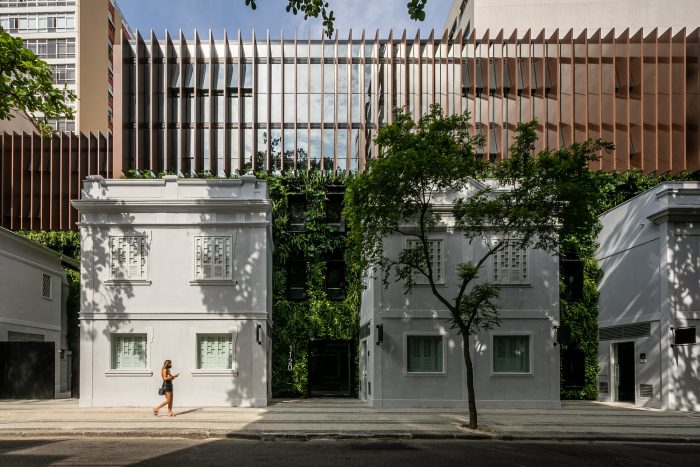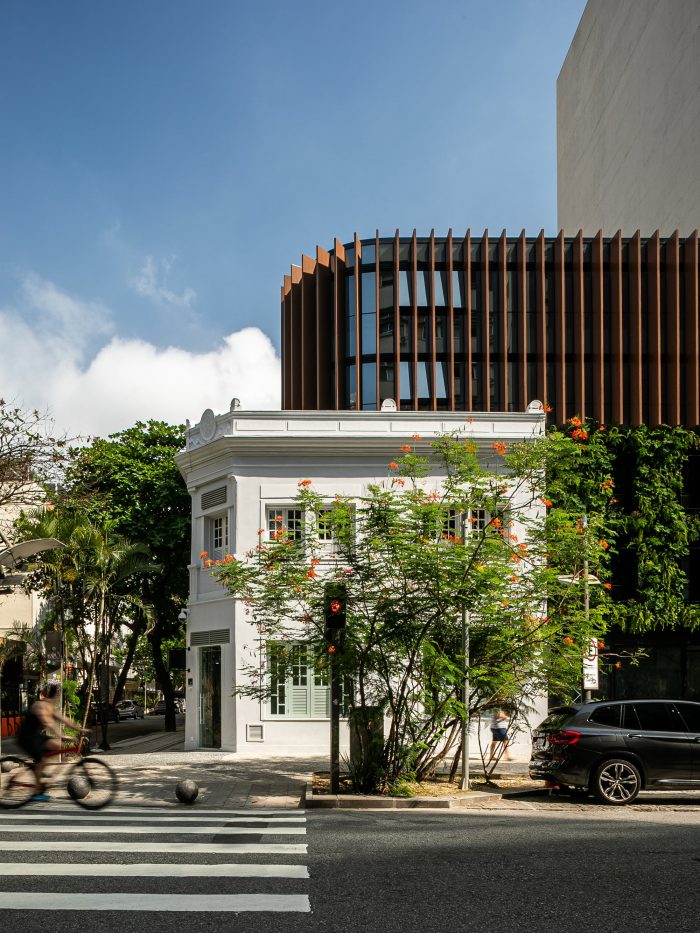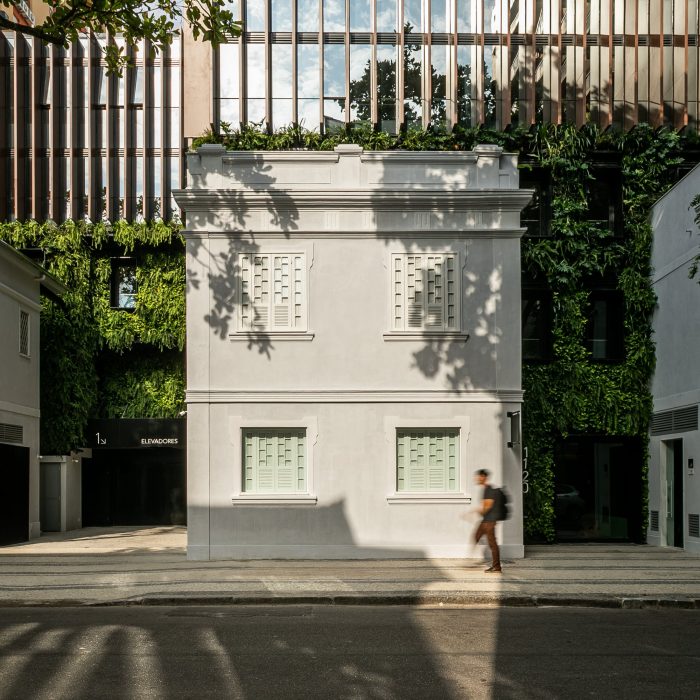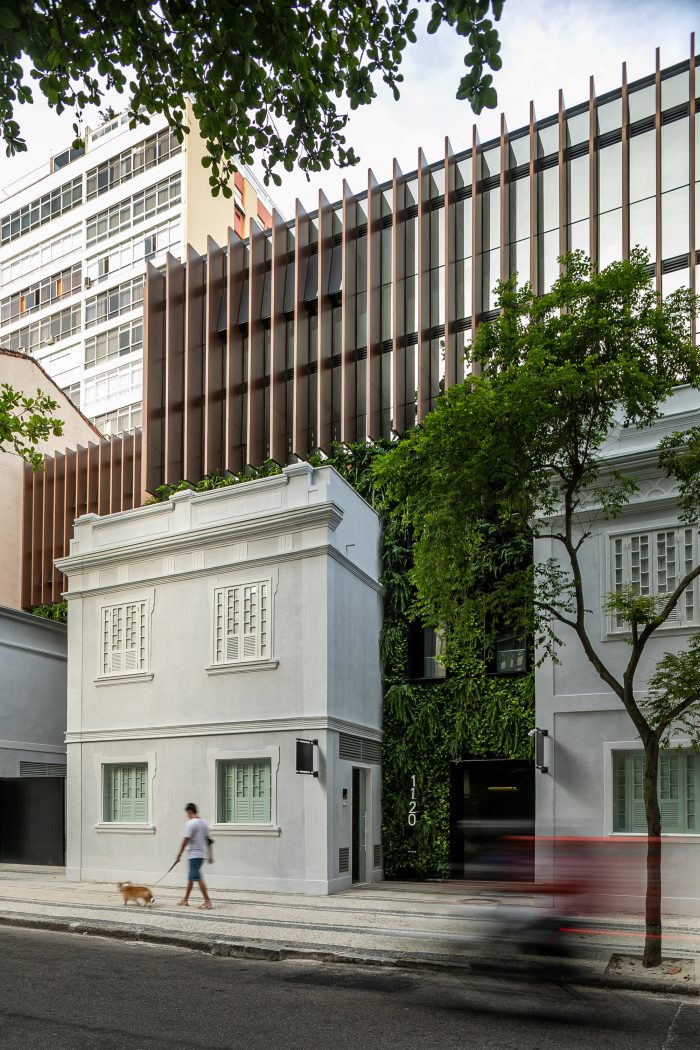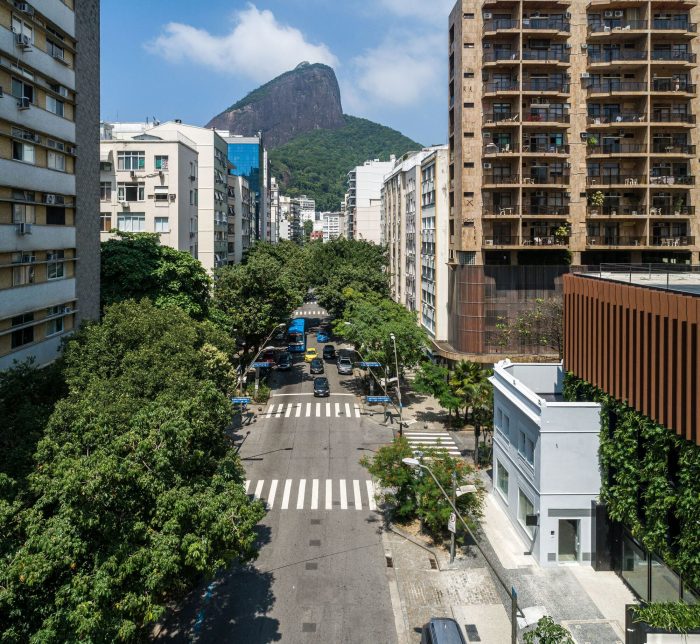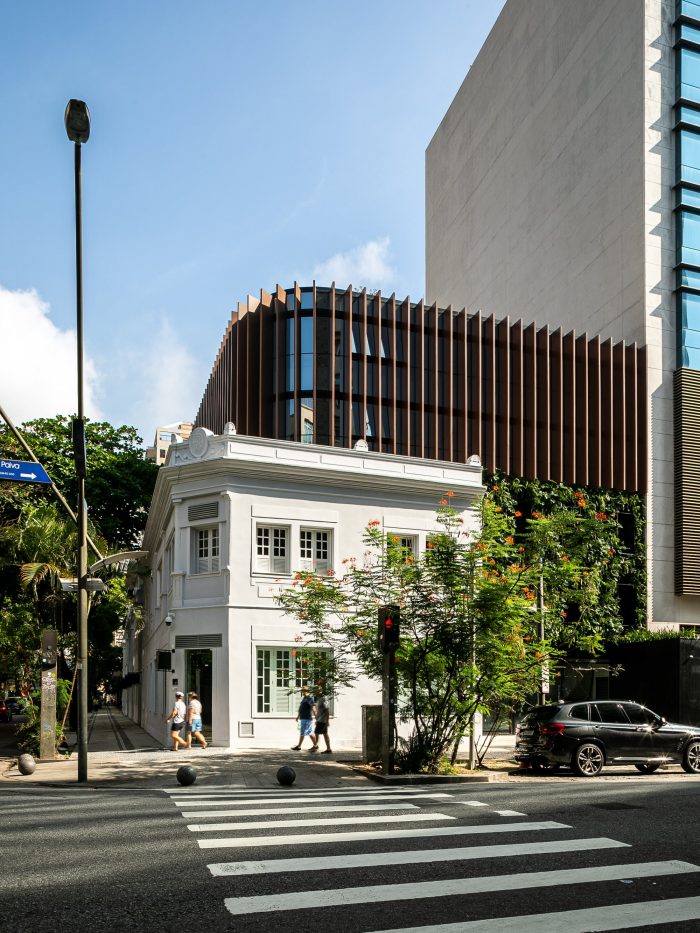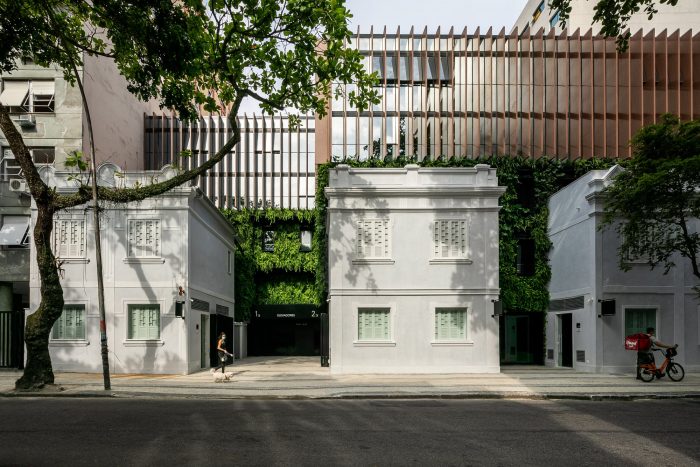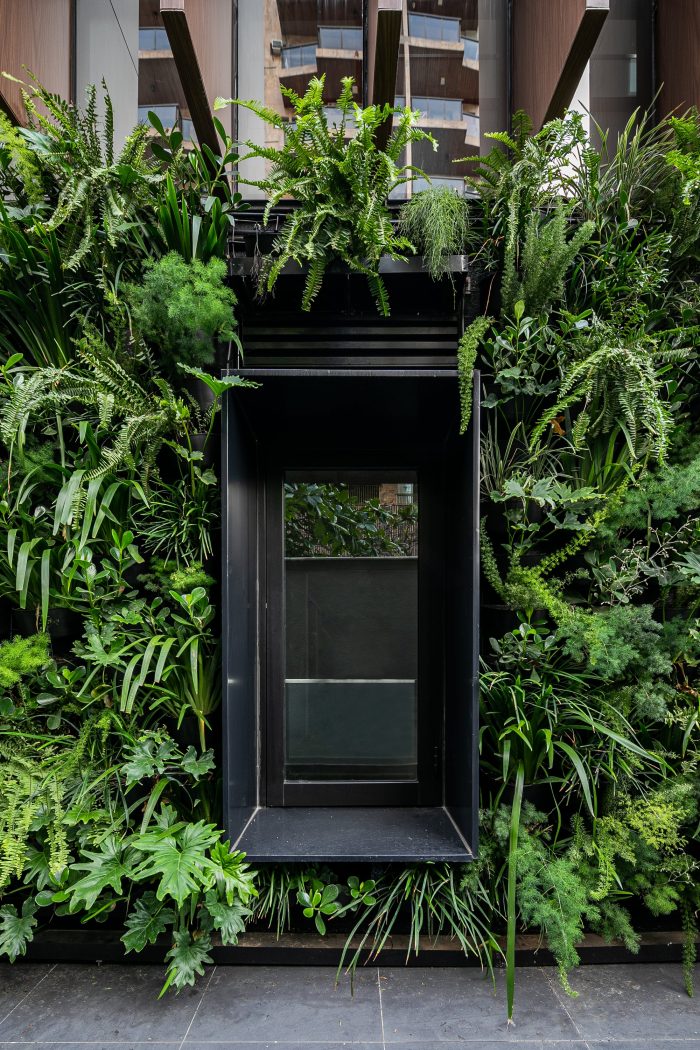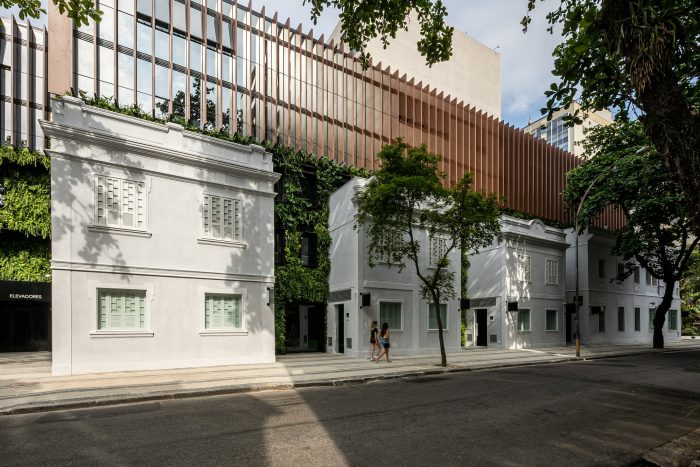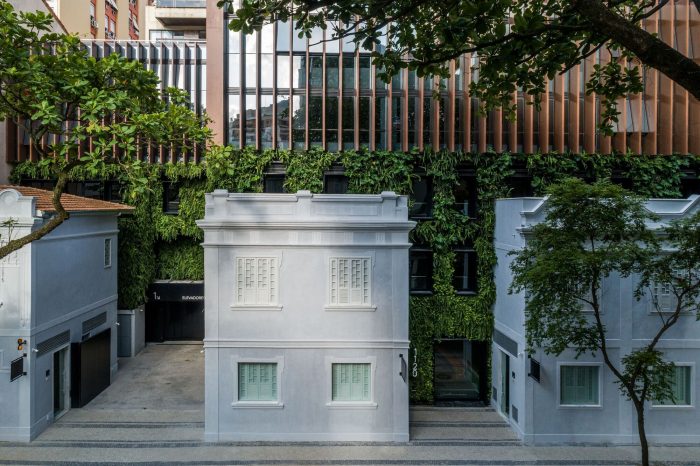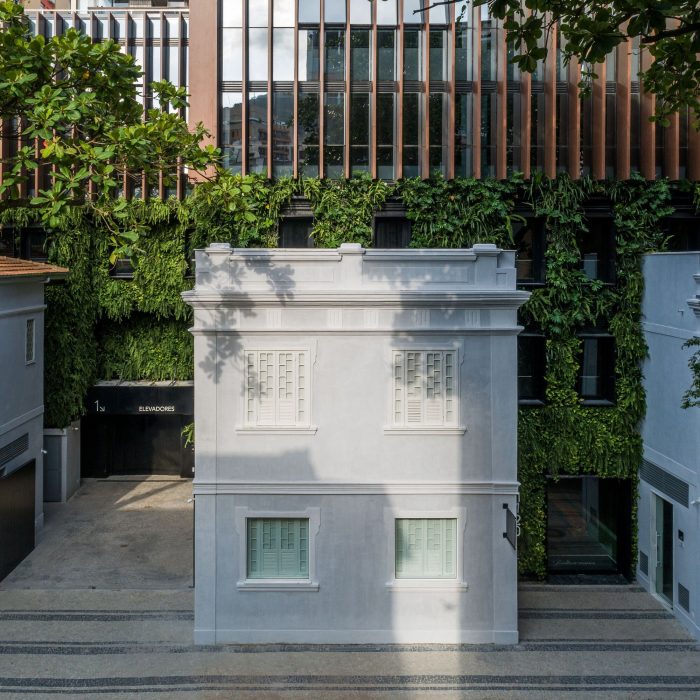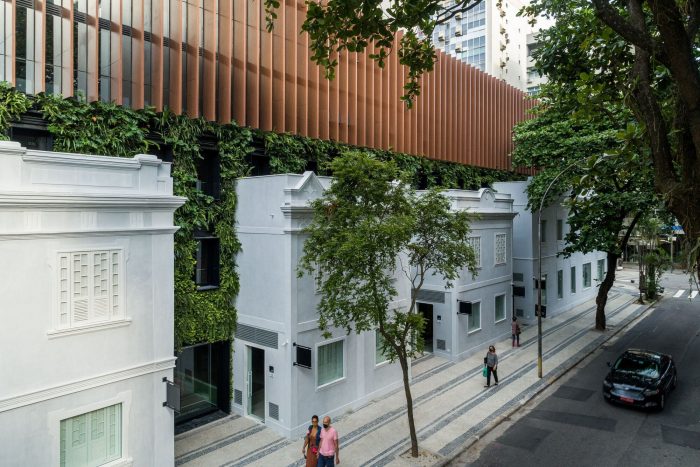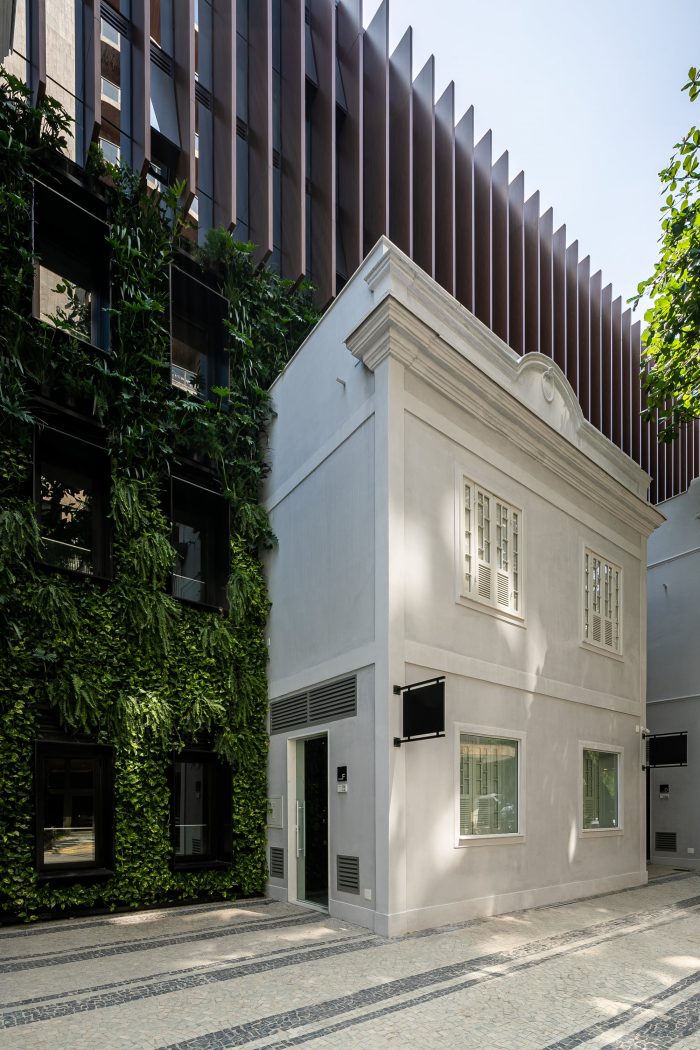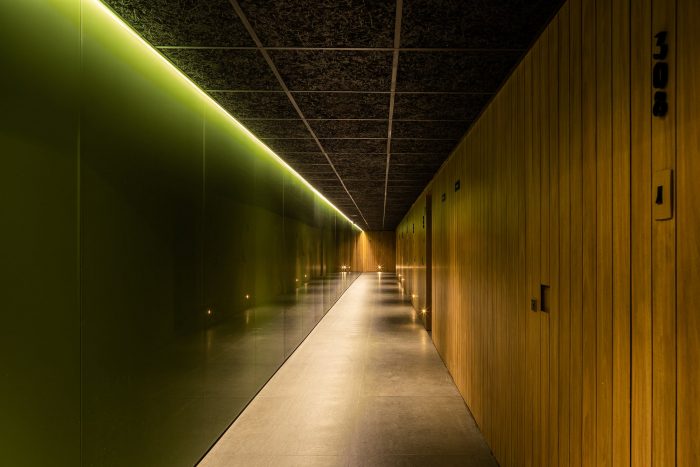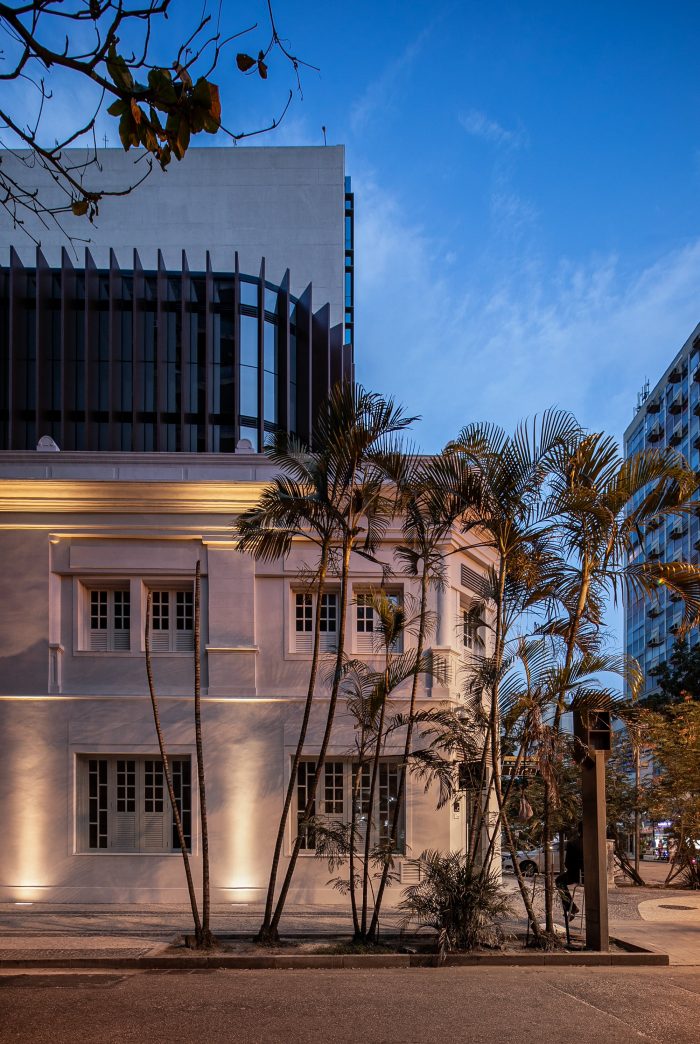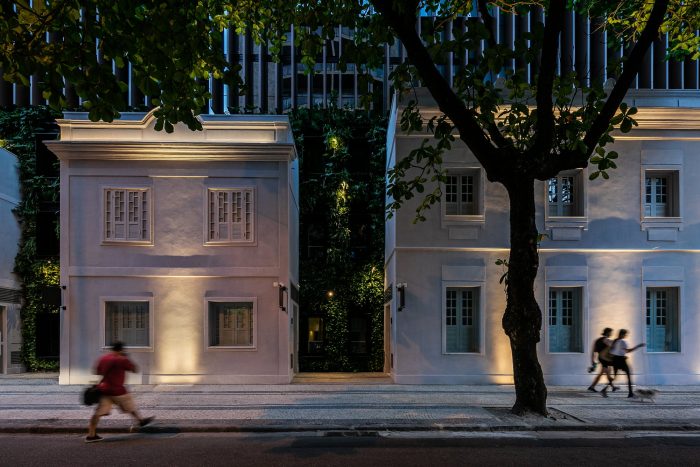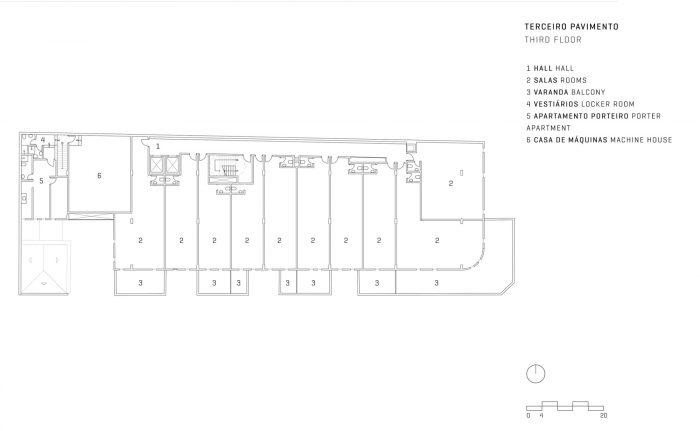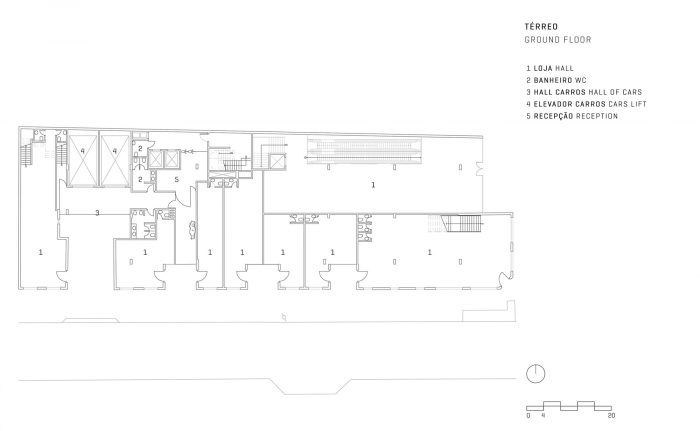我们被赋予了将原圣帕特里克学校改造成一个商业项目的责任,该学校是20世纪莱布隆社区最强烈的建筑记忆之一。外墙是一个被保留下来的文化地标,是整个项目形成的核心元素。为了进行建筑的翻新,并根据最新的土地使用和占用法规,我们建议在保留原学校的原始立面的同时,建造一座新的建筑。
We have been given the responsibility of transforming the former Saint Patrick’s school, one of the strongest architectural memories of the 20th century in the Leblon neighborhood, into a commercial project. The façade, a preserved cultural landmark, was the central element from which the entire project took shape. In order to proceed with the renovation of the building, and based on the latest land use and occupation legislation, we proposed erecting a new building while preserving the original façade of the former school.
修复项目涉及到对现在处于高级阶段的外墙的病理学的深入研究,以及对原始体积的后续构成的研究,遵守形状和建筑材料,以及确保原始材料和干预之间的兼容性所需的技术特征。
The restoration project involved an intense study of the pathologies, now in an advanced stage, of the façade and subsequent composition of the original volume, obeying the shape and the construction materials as well as the technical characteristics necessary for ensuring compatibility between the original materials and the intervention.
从立面开始,在一系列的区块中,通往底层10家商店的通道和公共通道被绘制出来。在上面,有五层是正在开发的办公空间,具有可适应的类型,还有地下四层的停车场。
From the façade, in a series of blocks, the passages and public accesses to the 10 stores on the ground floor were mapped out. Above, five floors are under development as office space with adaptable typologies, along with four underground levels for parking.
该地块位于Leblon社区主要大道的一角,在人流和车流密集的地方有很高的可见度。我们试图采用一种微妙的建筑风格,利用垂直花园和木质挡板,不强加给附近居民对原圣帕特里克教堂外墙的情感记忆。
Positioned on a corner of the Leblon neighborhood’s main avenues, the lot has high visibility in a location notable for heavy pedestrian and vehicle traffic. We sought to adopt a subtle architectural style that, using vertical gardens and wooden baffles, did not impose itself on the neighborhood’s emotional memory of the original Saint Patrick’s façade.
新建筑的建筑作为一个无声的背景,加强了老建筑的节奏和体量。除了这个意图之外,还决定将挡板体的四角向后移,减少视觉影响,并在某种程度上重新解释了该地区50年代以来的建筑体量。
The new building’s Architecture acts as a silent backdrop that enhances the rhythms and volumes of the older one. Added to this intention is the decision of rounding off and moving back the corners of the baffled volume, reducing the visual impact and to some extent reinterpreting the volumetry of the neighborhood’s buildings, dating from the 1950s.
Architects: Jacobsen Arquitetura
Area : 5140 m²
Year : 2020
Photographs :Pedro Mascaro
Project Team : Paulo Jacobsen, Bernardo Jacobsen, Edgar Murata, Marcelo Vessoni, Christian Rojas, Fernanda Maeda, Guilherme Pucci, Eduardo Aparício, Gustavo Borges, Thauan Miquelin
Interiors : Jacobsen Arquitetura
Team : Tatiana Kamogawa e Mariana Ferretti
Developer : Mozak
City : Rio de Janeiro
Country : Brazil


